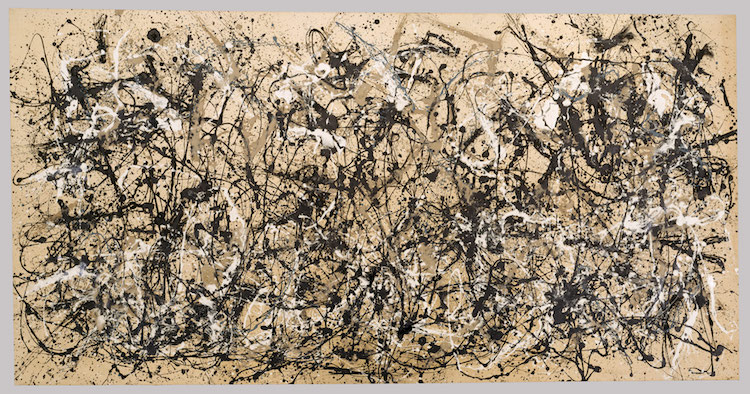Social Research Glossary A B C D E F G H I J K L M N O P Q R S T U V W X Y Z Home
Citation reference: Harvey, L., 2012-25, Social Research Glossary, Quality Research International, http://www.qualityresearchinternational.com/socialresearch/
This is a dynamic glossary and the author would welcome any e-mail suggestions for additions or amendments.
|
|
_________________________________________________________________
Abstract expressionism
Abstract expressionism refers to post-WW2 American non-geometric abstract art mainly based in New York.
This ‘school’ or ‘movement’ is opposed to traditional styles and technical procedures, renounces the idea of a finished art product subject to traditional aesthetic canons, demands freedom of self-expression and self-determination.
Abstract expressionist painting tends to be imageless, anti-formal, dynamic, energetic and improvisatory.
The term originated as a description of Kandinsky’s paintings around 1910 but became established around 1950 to describe the work of Gorky and Pollock. The term was quickly extended to include the work of other New York painters seen as part of the American abstract art movement even when their work was neither Abstract (De Kooning, Gottleib) nor expressionist (Kline, Rothko (Tate Gallery, 1988)). The term action painting has been suggested as more appropriate as it reflects the existential attitude of the act of creation rather than the finished product.
Paul (2004) wrote:
Never a formal association, the artists known as "Abstract Expressionists" or "The New York School" did, however, share some common assumptions. Among others, artists such as Jackson Pollock (1912–1956), Willem de Kooning (1904–1997), Franz Kline (1910–1962), Lee Krasner (1908–1984), Robert Motherwell (1915–1991), William Baziotes (1912–1963), Mark Rothko (1903–1970), Barnett Newman (1905–1970), Adolph Gottlieb (1903–1974), Richard Pousette-Dart (1916–1992), and Clyfford Still (1904–1980) advanced audacious formal inventions in a search for significant content. Breaking away from accepted conventions in both technique and subject matter, the artists made monumentally scaled works that stood as reflections of their individual psyches—and in doing so, attempted to tap into universal inner sources. These artists valued spontaneity and improvisation, and they accorded the highest importance to process. Their work resists stylistic categorization, but it can be clustered around two basic inclinations: an emphasis on dynamic, energetic gesture, in contrast to a reflective, cerebral focus on more open fields of color. In either case, the imagery was primarily abstract. Even when depicting images based on visual realities, the Abstract Expressionists favored a highly abstracted mode.
Richman-Abdou (2017) wrote under the headings 'Jackson Pollock' and 'Clifford Still':
American artist Jackson Pollock played a major role in the rise of Abstract Expressionism, a post-war movement characterized by spontaneous creation, energetic composition, and gestural paint application. To produce his iconic action paintings, Pollock would drip, pour, and splash industrial paint onto large-scale canvases strategically set on the floor.
Along with Pollock, Clyfford Still helped elevate Abstract Expressionism into a prominent art form. Though Still originally produced representational pieces, he transitioned to complete abstraction by the 1940s. His work is characterized by large-scale canvases covered in jagged formations of juxtaposed color. Though this unique painting style would dominate Still's portfolio, he did not want his works to revolve around traditional artistic sensibilites. "I never wanted color to be color. I never wanted texture to be texture, or images to become shapes. I wanted them all to fuse together into a living spirit."

Jackson Pollock 1950 Autumn Rythm
See also
Tate Gallery Liverpool, 1988, Mark Rothko: The Seagram Mural Project. Liverpool, Tate Gallery.
Top